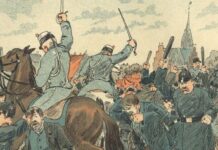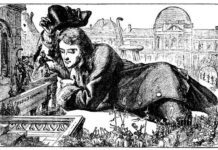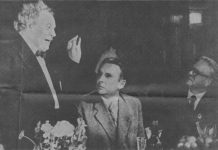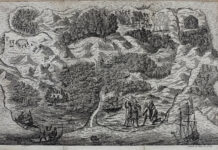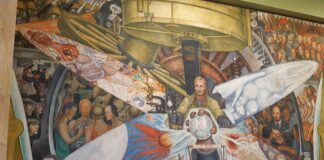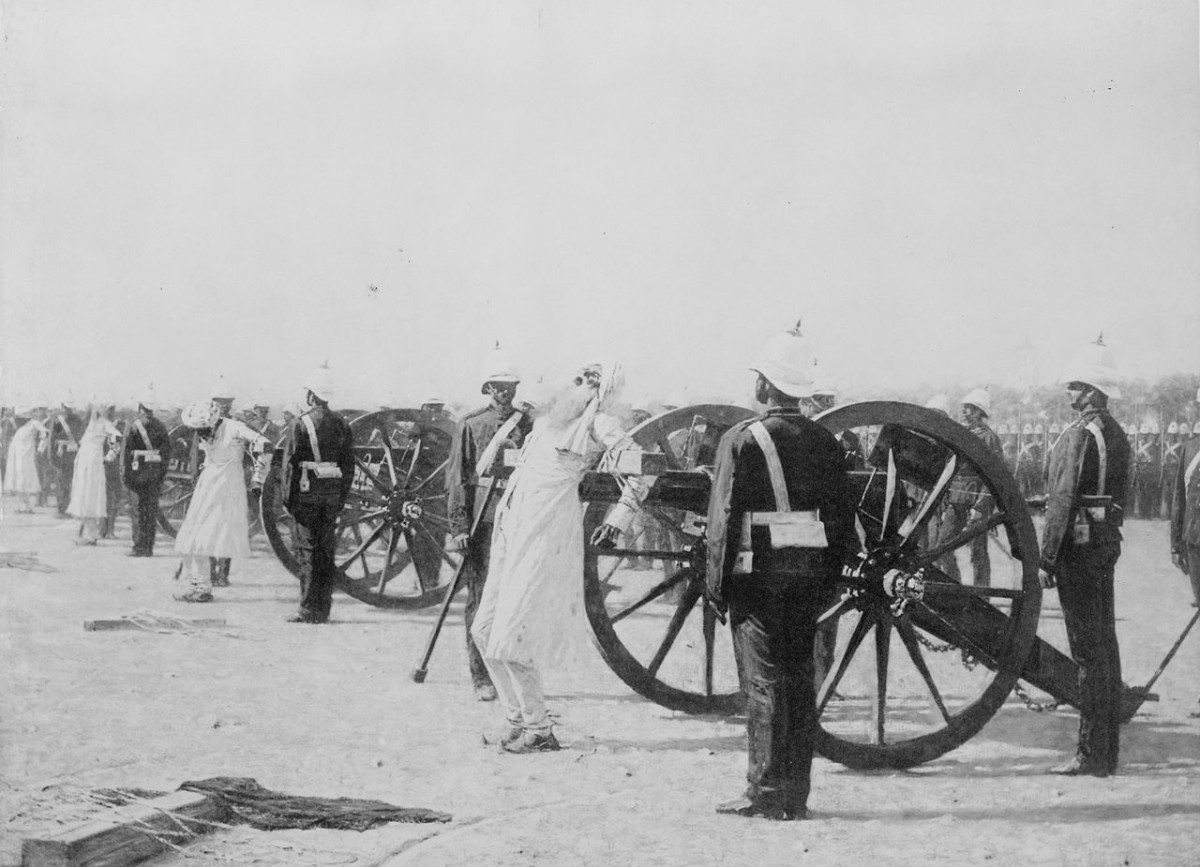
Socialistisk Biblioteks Tidslinje med links til begivenheder og personer i 1857.
Se også Index over personer, organisationer/partier og værker (som bøger, malerier, mm.), steder, begivenheder, mv., der er omtalt på hele Tidslinjen, titler og indhold på emnelisterne osv.
6. januar 1857
Den anarkistiske forfatter Jean Jacques Ipsen fødes (dør 7.7.1936)
- Ipsen, Jean Jacques (Leksikon.org)
- Ipsen, Jean Jacques (Sorte Fane Blog & Distro). Oversigt over tekster på dansk.
Danske Revolutionære: ideer, bevægelser og personligheder. Af Carl Heinrich Pedersen (Borgens Forlag, 1970, 385 s.). Indeholder pjecen “Slip Mennesket løs” [1910] af J.J. Ipsen, side 101-129 + biografisk indledning, side 95-100).
Se også:
Grundloven. Af J.J. Ipsen (Sorte Fane) Oprindeligt trykt i Den Røde krig, om grundlovsændringen 1918.
Bogen om Socialdemokratiet (1929). Af Jean Jacques Ipsen (Den Store Danske Kanon). Uddrag, scroll ned.
Og på Socialistisk Bibliotek:
Linkboxen: Anarkisme vs. Marxisme
20. april 1857
Den danske naturalistiske forfatter, journalist m.m. Herman Bang fødes Asserballe på Als. (Dør 29. januar 1912 i Ogden City, Utah).
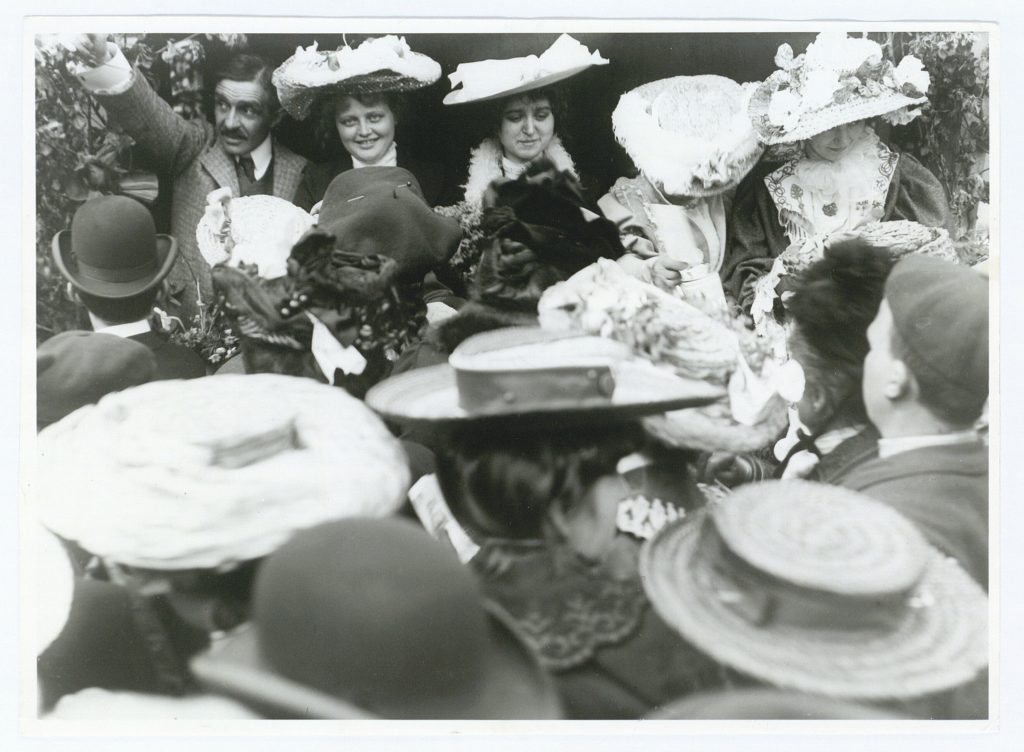
Biografier og værker:
- Herman Bang. Af Villy Sørensen (Denstoredanske)
- Herman Bang. Af Chr. Rimestad (Dansk Biografisk Leksikon)
- Herman Joachim Bang (Gravsted.dk). Med biografi.
- Herman Bang (Wikipedia.dk)
- Bang, Herman. Af Maria Høher-Larsen (Forfatterweb, 2016)
- Herman Bang. Af Mette Elsig Olsen (Litteratursiden.dk)
- Storbyen, det moderne livs scene – Herman Bang. Af Lise Busk-Jensen
(Dansk Litteraturs historie, bd. 3, s.188-218)

Artikler:
Den store europæer. Af Peter Nielsen (Information/Litteratur, 11. juni 2016, s.4-5). Bang var “fortrop i udviklingen af den europæiske modernisme”.
Herman Bang og arven fra Dybbøl. Af Jens Fransen (Arbejderen.dk, 27. januar 2012)
Herman Bang læst med queerbrillen. Af Lilian Munk Rösing (Webmagasinet Forum, 2003: online på Internet Archive)
Herman Bangs Breve. Hovedredaktør Gert Posselt (Det Danske Sprog og Litteraturselskab, 2016). Herman Bangs breve til Peter Nansen og til Betty Nansen. Kommenteret udgave af ialt 642 brevtekster.
Se også:
Da middelklassen opfandt moralen. Af Tom Christiansen (Socialistisk Revy, nr.5, juni/juli 1998, s.22)
10. maj 1857
“The Sepoy Rebellion”. Højdepunktet for månedslange mytterier blandt de indiske tropper under britisk herredømme i Indien. Betegnes som den første indiske uafhængighedskrig.
- Sepoy-oprøret (Wikipedia.dk). Kort dansk intro-artikel.
- Indian Rebellion of 1857 (Wikipedia.org)
The Sepoy War of 1857: Mutiny or First Indian War of Independence? By Nilesh Patel (Emory Univ., Georg., US, 2008; online at Internet Archive Way BackMachine). On Marx and the rebellion.
The Indian Mutiny. Part 56 in Neil Faulkner: A Marxist History of the World (Counterfire, 2 January 2012)
The 1857 Rebellion in Colonial India (Rebel, November 12, 2020). “The 1857 Rebellion against British rule in Colonial India hasn’t always received the attention it deserves, despite being one of the most important uprisings of the 19th century. Pranav Jani argues it’s high time we changed that.”
A great British tradition (Socialist Review, Issue 314, May 2007). “John Newsinger recalls the events of the Great Indian Rebellion 150 years ago this month.”
The Sepoy Mutiny after 150 years. By Niranjan Ramakrishnan (CounterPunch, May 12/13, 2007). “Breaking out in Meerut on May 10, 1857, the uprising soon spread all across northern and central India.”
150 years after India’s mutiny against Britain. By Pravan Jani (Socialist Worker [US], Issue 633, May 25, 2007). “May 10 marked the 150th anniversary of the massive Indian revolt against British rule, a historic day for the anti-colonial struggle in South Asia and for rebellions against occupation everywhere.”
The Indian Mutiny: rejection of empire (Socialist Worker, Issue 2033, 13 January 2007). About William Dalrymple, The Last Mughal, The Fall of a Dynasty, Delhi 1857 (Bloomsbury, 2008, 608 p.). “John Game writes that the Indian mutiny against the British Empire in July 1857 is an inspiration to today’s anti-imperialists.”
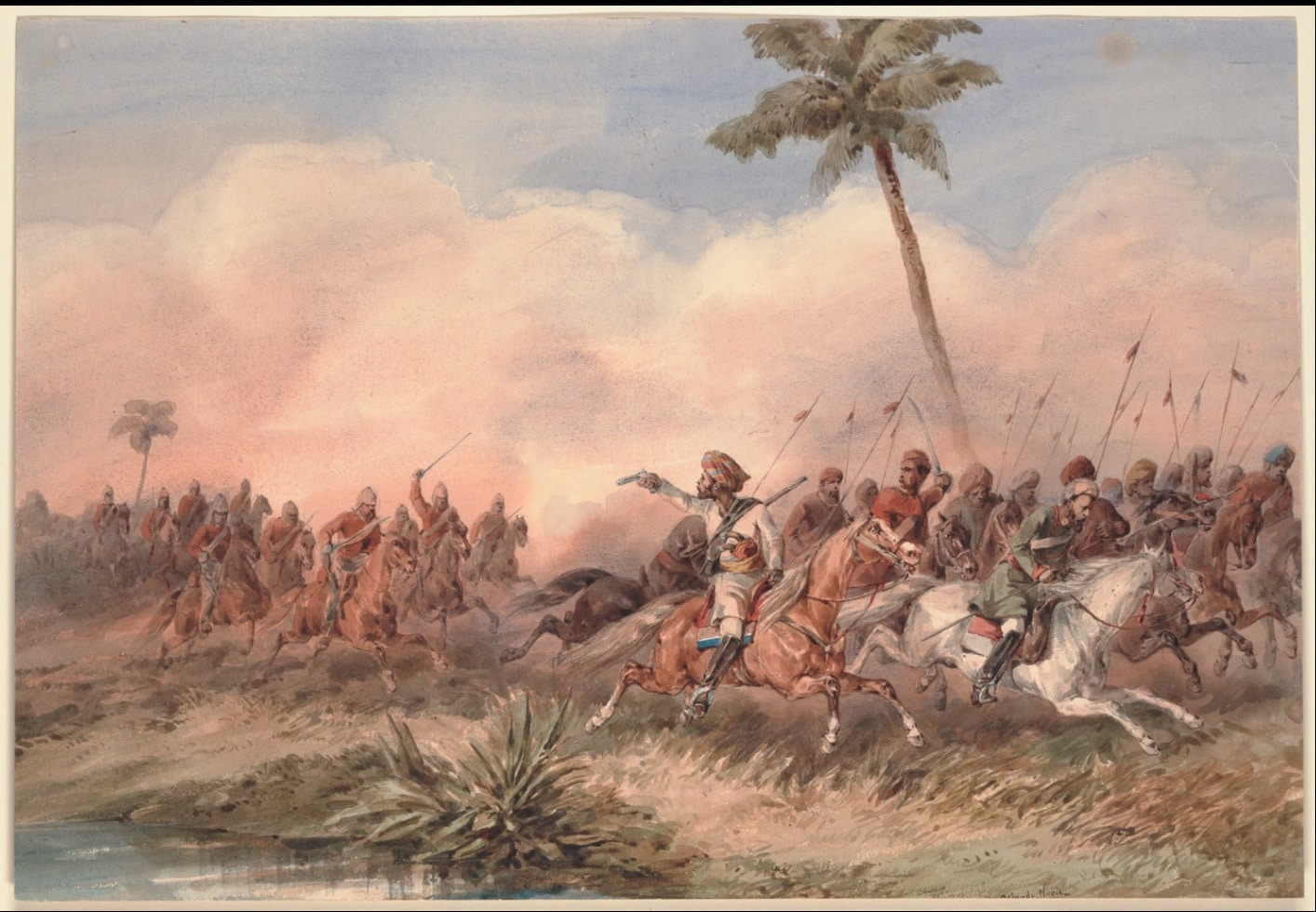
Se også / See also:
The economics of starvation: Laissez-faire ideology and famine in colonial India. By Rune Møller Stahl (Department of Political Science, University of Copenhagen, 2014, 15 p.). Mainly on 1870- .
Marx og Indien:
The First Indian War of Independence (1857-1858) and the East India Company (June-August 1853). Marx & Engels in the New-York Daily Tribune July 1857 – October 1858 (Marxists Internet Archive; Works of Marx & Engels, 1853-1858)
Heraf online på dansk på Marxisme Online:
- Det britiske herredømme i Indien. Af Karl Marx (1853).
- De fremtidige resultater af det britiske herredømme i Indien. Af Karl Marx (1853)
Marx on the Indian Revolt, the violence of the oppressed, and imperialist hypocrisy (In Defense of Marxism, 12 October 2023). “The following short article by Karl Marx, published in the New York Daily Tribune in 1857, comments on the Indian Rebellion that broke out against the British East India Company the same year.”
What the Indian rebels taught Karl Marx. By Pranav Jani (SocialistWorker.org, May 9, 2018). “The charge that Marxism is Eurocentric erases not only what Marx himself wrote, but the work of other Marxists who debated and developed his ideas.”
The Sepoy War of 1857: Mutiny or First Indian War of Independence? By Nilesh Patel (Emory University, Atlanta, Georgia, US, 2008). “Marx’s position … is that the Indians were victims of both physical and economic forms of class oppression by the British.”
Karl Marx on India: An assessment, Part I. By Fakrul Alam (The Daily Star, December 29, 2018) + Part II (January 5, 2019). “Marx was clearly consistently anti-colonial in his writings of India. We should have no doubts in our mind on that account.”
An enemy of Empire (Socialist Review, Issue 310, October 2006). Review of Iqbal Husain (ed.), Karl Marx on India (New Delhi, Tulika Books, 2006, 308 p.). “Chris Harman is impressed by a new collection of Marx’s journalistic writings on India which helps demolish the myths that Marx was a supporter of ‘progressive’ imperialism.”
Marx on India: A clarification. Chapter 5 in Aijaz Ahmad: In Theory: Classes, Nations, Literatures (Verso, 1992, p.221-242; online at Maximum Red). “Marx’s famous view of colonialism’s double mission in India: one destructive, the other regenerating …”
Marx and India. By V.G. Kiernan (Socialist Register 1967, p.159-189). “He came to be seriously interested in India about 1853 …”
Marx and Indian history (In Defense of Marxism, 27 June 2007). “Jamil Iqbal outlines how British imperialism, by introducing capitalist methods, broke down the old Asiatic mode of production and with it the old type of social structures.”
Se også på Socialistisk Bibliotek: / See also on the Library’s Timeline:
- Tidslinjen 2. oktober 1869 om uafhængighedslederen Gandhi.
- Tidslinjen 27. september 1907 om den indiske revolutionære Bhagat Sing.
- Tidslinjen 12. marts 1930 om Saltmarchen / on “Salt Satyagraha”, the Salt March.
- Tidslinjen 15. august 1947 om Indiens uafhængighed / on the independence of India.
- Tidslinjen 2. september 2016 om generalstrejke i Indien.
5. juli 1857
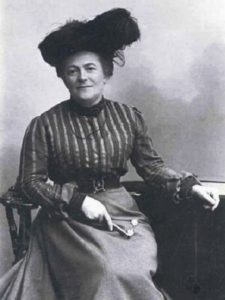
Den tyske socialistiske kvindesagsforkæmper Clara Zetkin fødes (som Clara Eissner). Dør 20. juni 1933.
In Danish (+ svensk):
- Zetkin, Clara. Af Drude Dahlerup (Leksikon.org)
- Clara Zetkin (Marxistarkiv.se). Med 7 tekster online af/om CZ.
Kampen mod fascismen. Af Clara Zetkin (Magasinet Arbejderen/Arbejderen.dk, 10. juni 2024). “Clara Zetkins tale blev holdt den 20. juni 1923 på et udvidet møde i Kommunistisk Internationales eksekutivkomité. Den bringes her i uddrag.” Se hele talen på svensk: Kampen mot fascismen (pdf) (Marxistarkiv.se, 2. oktober 2019, 21 s.).
Clara Zetkin – et liv i kamp: en sentral figur i den tyske revolusjonære bevegelsen. Av Kjersti Ericsson (Gnist: Marxistisk Tidsskrift, nr.1, 2021). “Clara Zetkin var en av pionerene i den revolusjonære kvinnebevegelsen. Hun var også en sentral figur på venstresida i det tyske sosialdemokratiske partiet (SPD).”
Clara Zetkin og kampen mot fascismen. Av John Riddell og Mike Taber (Gnist: Marxistisk Tidsskrift, nr.2, 2018, s.62-73). “Artikkelen er ein introduksjon til den nyleg utgitte Fighting Fascism: How to struggle and how to win av den tyske marxisten Clara Zetkin.” (Haymarket Books, 2017)
Pionerer: Clara Zetkins kamp for enhedsfronten. Af John Riddell (Socialistisk Information, 22. august 2015). “Denne artikel vil kun omhandle en lille del af hendes aktiviteter, men en del som var afgørende for den tyske kommunismens tragedie i 1920erne.”
Clara Zetkin: Arbejderenhed og feminisme på Kominterns kongres. Af John Riddell (Socialistisk Information, nr.249, april 2014). “Denne artikel handler om Zetkins rolle i årene efter den russiske revolution.” Se debat af artiklen nedenfor (på engelsk).
Clara Zetkin – revolutionær kvindeforkæmper. Af Gerd Callesen (Arbejderen.dk, 6. marts 2010). “Hun så kvindekampen i en bred sammenhæng, så dens mange muligheder og dens betydning for en revolutionær ændring af samfundet.”
Clara Zetkin (1857-1933) – et portræt (pdf). Af Birgitte Possing (Arbejderhistorie, nr.2, 2010, s.29-46). “Hun portrætteres gerne som den konsekvente socialistiske kvindesagskæmper. I artiklen argumenteres for et mere sammensat billede af Zetkin som både socialist og feminist.”
Socialisme og kvindefrigørelse i kejsertidens Tyskland (pdf). Af Kirsten Gomard (Kontur, nr.11, 2005, s.25-33). “Fokus vil særligt være Clara Zetkins rolle både som ideolog og især som formidler gennem tidsskriftet Die Gleichheit, som hun redigerede fra 1892 til 1917.”
Fra møde med Lenin (1925). Af Clara Zetkin (Revolution, 29. januar 2010). Uddrag fra Lenin om kvindens frigørelse (Tiden, 1980)
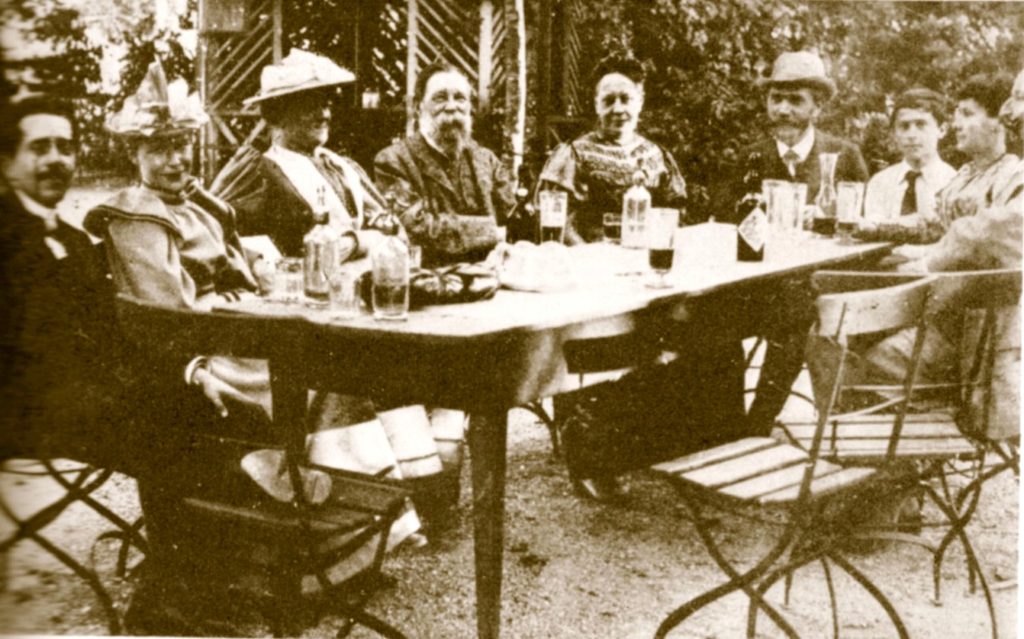
In English & German:
- Clara Zetkin (Wikipedia.org). With further reading + links, incl. the long German article).
- Clara Zetkin (Marxists Internet Archive; Marxist Writers). With Biography, Writings, Links. See also Deutschsprachiger Teil + Norske sektion: Clara Zetkin 1857-1933.
- Clara Zetkin (Spartacus Educational).
- Clara Zetkin (site). Special website on occasion of her 80th day of death on the 20th of June, 2013 (including archive of her works, also in German, French etc.).
Clara Zetkin and the struggle against fascism. By John Riddell and Mike Taber (International Socialist Review, Issue 107, Winter 2017-18, p.109-121). “The following article is the introduction to a newly-published collection Fighting Fascism: How to Struggle and How to Win by the German Marxist Clara Zetkin” (Haymarket Books, 2017, 144 p.). På norsk: Clara Zetkin og kampen mot fascismen (Gnist: Marxistisk Tidsskrift, nr.2, 2018) + extract from the book: Clara Zetkin’s defense of the united front. Part 1-2. By John Riddell (Marxist Essays and Commentary, April 21-26, 2019). See book review by Elizabeth Schulte: The roots of fascism and the seeds for its defeat (SocialistWorker.org, November 30, 2018).
Clara Zetkin: Letters and Writings. By Sheila McGregor (Socialist Review, Issue 410, February 2016). Review of Zetkin anthology, edited by Mike Jones and Ben Lewis (Merlin Press/Revolutionary History, 2016, 400 p.). “This volume of letters and writings by and about Zetkin, some translated into English for the first time, successfully establishes her as a leader in her own right in the revolutionary socialist movement.” See also review by Ian Birchall (London Socialist Historian Group, 8 January 2016).
Clara Zetkin – a class fighter (Socialist Worker, Issue 2476, 20 October 2015). “Activists have always fought over Clara Zetkin’s contribution to women’s liberation. Judith Orr argues that she was a revolutionary who saw workers as key to ending oppression.”
Clara Zetkin: Preached principle, promoted unity. By Ben Lewis (Weekly Worker, Issue 1007, April 24, 2014). Review of Marilyn J Boxer and John S Partington (eds), Clara Zetkin: national and international contexts (Socialist History Society, 2012, 118 p.)
Clara Zetkin, socialism and women’s liberation (SocialistWorker.org, March 7, 2014). “Elizabeth Schulte looks at the legacy of Clara Zetkin–the German socialist at the turn of the 20th century–and her vital contributions to the Marxist tradition.”
Clara Zetkin in the lion’s den. By John Riddell (Marxist Essay and Commentary, January 12, 2014). “Let us survey Zetkin’s role in the great ideological struggle at the Third Congress and then link it to her involvement in the movement for women’s emancipation.”
Debate:
Lindsay German: Clara Zetkin: oppression, class, and socialism (January 18, 2014)
John Riddell: Reading Zetkin in context (February 6, 2014)
Tad Tietze: Zetkin and oppression: consistent method, flexible application (February 16, 2014)
John Riddell: Reading Zetkin: What strategy for women’s liberation? (March 9, 2014)
On the trail of Clara Zetkin. By John S. Partington (Counterfire, 16 April 2010). “In March, I visited Stuttgart on what I expected to be an interesting but routine research trip. What I found was a fascinating history of workers’ organisation, socialism and a living memorial to the life and activities of Clara Zetkin.”
Clara Zetkin, socialism and women’s liberation. By Trish Corcoran (Green Left Weekly, Issue 746, 9 April 2008). “The fact Zetkin and others like her had the courage to stand up for the rights of women and workers has laid the basis for much greater involvement of women in politics and society.”
Clara Zetkin and the struggle for a working class women’s movement (Fifth International, 1 October 1998). “… women within the SPD-particularly Clara Zetkin struggled to lay the basis for a socialist led, working class based women’s organisation.”
The socialist women’s movement in Germany. Chapter 5 in: Class Struggle and Women’s Liberation. By Tony Cliff (Bookmarks, 1984, p.67-85; online at Marxists Internet Archive). Contents: Organising women in trade unions – Zetkin on bourgeois feminism – Zetkin and the international socialist women’s movement – Right-wing opposition to Zetkin – The sorry end of the SPD women’s movement – Extremist right takes control of bourgeois feminist movement.
Clara Zetkin and the German socialist feminist movement. By Tony Cliff (International Socialism, Issue 13, Summer 1981, p.29–72). “Zetkin argued that, unlike the bourgeois feminists, socialist women should not confine themselves to the demand for the vote, but should fight for the right to work, equal pay, paid maternity leave, free child-care facilities, and education for women.” See also Juliet Ash: Clara Zetkin: A reply to Tony Cliff (International Socialism, Issue 14, Autumn 1981, p.120-124)
The death of com. Klara Zetkin: a historical appreciation of the great woman revolutionist. By Max Shachtman (The Militant, Vol.4, No.36, 22 July 1933; online at Marxists Internet Archive). “The death of Klara Zetkin removes from the revolutionary labor movement one of that diminishing handful of true founders of the Communist International still left in its ranks.”
Litteratur på dansk:
Clara Zetkin: Arbejderkvinder i alle lande …: udvalgte artikler og taler. Red. og oversat af Elise Andersen mfl. (Tiderne Skifter, 1974, 298 sider)
Socialisme og kvindefrigørelse i kejsertidens Tyskland (pdf). Af Kirsten Gomard (Kontur, nr.11, 2005). “Fokus vil særligt være Clara Zetkins rolle både som ideolog og især som formidler gennem tidsskriftet Die Gleichheit, som hun redigerede fra 1892 til 1917.”

Se også/see also:
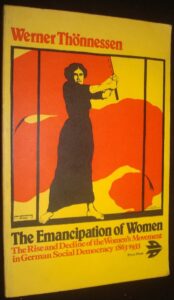
The Emancipation of Women: The Rise and Decline of the Women’s Movement in German Social Democracy, 1863-1933. By Werner Thönnesen (Pluto Press, 1973; online at Archivo Obrero/Biblioteca). “Thonnessen has gathered a wealth of new material. His conclusion is clear; the fortunes of the women’s movement will rise or decline with the fortunes of the working-class movement as a whole, and any demands that fall short of the liberation of working men and women alike will ultimately remain ineffective [p.198].”
The socialist women’s movement in Germany. Chapter 5 in Tony Cliff: Class Struggle and Women’s Liberation (Bookmarks, 1984, p.67-85; online at Marxists Internet Archive)
Se også på Socialistisk Bibliotek / See also at Socialist Library:
Emnelisten 8. marts: Kvindernes internationale kampdag – oprindelse og historie / on the origins of March 8: Woman’s International Day
Den tyske revolution 1918-23 (emneliste)
24. juli 1857
Forfatteren Henrik Pontoppidan fødes i Fredericia (dør 21. august 1943 i Charlottenlund).
Martin Andersen Nexø skriver i både “Pelle Erobreren” og erindringsbind: “Til mesteren Henrik Pontoppidan”.
Får en delt Nobelpris i litteratur den 10. december 1917, se denne.
Links: leksikale og sites
- Henrik Pontoppidan (Denstoredanske)
- Henrik Pontoppidan (Wikipedia.dk)
- Henrik Pontoppidan (Gravsted.dk)
- Himmelflugt – Henrik Pontoppidan. Af Lise Busk-Jensen (Denstoredanske/Dansk Litteraturs Historie, bd. 3, s.219-249)
- Henrik Pontoppidan. Af Poul V. Rubow (Denstoredanske/Dansk Biografisk Leksikon)
- Henrik Pontoppidan, 1857-1943. Af Lotte Thyrring Andersen (Danmarkshistorien.dk)
- Henrik Pontoppidan. Af Martin Andersen Nexø (Arbejderbladet 24. juli 1937). Se noten tv.
Henrik Pontoppidan: Portal for læsere, studerende, lærere og forskere (Pontoppidan Selskabet). Site med bibliografi, Pontoppidan-leksikon, forskning, mv.: Litteraturen omkring Pontoppidan, bl.a. Brevveksling med Martin Andersen Nexø.
+ Karin Michaelis om Pontoppidan. Noter dateret 30. august 1946. Dele af indholdet brugt i redigeret form i hendes engelsksprogede erindringsbog Little Troll (1946, side 280-282: Unforgettable People).
Pontoppidan Centret (Syddansk Universitet) (Åbnet 15. september 2020). “Vi vil [være] drivkraft i Pontoppidan-forskningen i Danmark og i udlandet … [og udvikle] det store frivillige arbejde, der gennem mange år er gjort i Pontoppidan Selskabet og omkring netstedet Henrikpontoppidan.dk.” Se ovenfor.
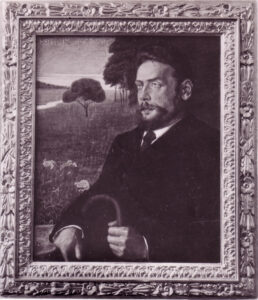
Under dette portræt malt af John Rohde, gengivet i ‘Juleroser’ 1903 satte Pontopidan verset:
“Vi ejer Skatte nok af Sølv og Guld,
men lever oftest dog paa Laan og Leje, –
Ku hvad vi pløjer op af egen Muld,
beholder vi til evig Arv og Eje”
Kilde: Henrik Pontoppidan. Ledetråd … af Billeskov Jansen, side 7. (se nedenfor under ‘LITTERATUR).
Artikler:
Om Flemming Behrendts Livsrusen. Af Søren Schou (Henrikpontoppidan.dk). “Tale holdt ved Pontoppidan Selskabets reception 10. september 2019 i Munkekælderen, Københavns Universitet, i anledning af udgivelsen af Flemming Behrendts Livsrusen: En bog om Henrik Pontoppidan (Gad, 2019, 707 s.). Se også interview: Flemming Behrendt har levet et liv med Henrik Pontoppidan (Berlingske.dk, 10. september 2019).
Pontoppidans jøder. Af Flemming Behrendt (Henrikpontoppidan.dk). Foredrag holdt på Pontoppidan Selskabets sommermøde 2014: “Pontoppidan var antisemit, men holdt op med at være det. Til gengæld var han hele sit liv racist, forstået på den måde at han tillagde folkene, og kvinderne, karakteregenskaber der skrev sig fra det forhold at de var eksempelvis: jøder eller kvinder.”
Mesteren er blevet 150 år. Af Jens Fransen (Arbejderen.dk, 2. august 2007). “Forfatteren Henrik Pontoppidan fyldte rundt i sommerferien i år. Også i dag rammer hans socialt indignerede fortællinger plet.”
Henrik Pontoppidan (1857-1943). Af Rune Engelbreth Larsen (Humanisme.dk, 6. august, 2006). “Henrik Pontoppidan modtog Nobelprisen i litteratur i 1917 (til deling med Karl Gjellerup) og er vel ubestrideligt én af dansk litteraturhistories allerstørste forfattere.”
En af anarkister tilberedt sardindåse (Henrikpontoppidan.dk). Af Morten Thing. Foredrag om ‘den radikale Pontoppidan’ i Pontoppidan Selskabet 2005. “Der er ingen tvivl om, at Pontoppidan var radikal i 1880’erne og 90’erne i ordets datidige betydning.”
De Dødes Rige som politisk samtidsroman (Henrikpontoppidan.dk). Af Torben Krogh. Foredrag i Pontoppidan Selskabet 2003: “Som politisk roman er De Dødes Rige en fortælling om rå magtudøvelse, forfængelighed, manipulation, fejhed og forstillelse. Men det er også en beretning om stærke meningsbrydninger, kampen om anskuelser og politiske holdninger.”
Lykke-Pers ulykke. Af Torben Hviid Nielsen (Dansk Sociologi, 13/2, 2002, s.121-135; online på Henrikpontoppidan.dk). “Tegningen og karakteristikken af hovedpersonen Per Sidenius er … lige så meget en udviklings- og dannelses- som en samtidsroman. Og sammenhængen mellem samtidsbillede og persontegning var og er omstridt.”
Henrik Pontoppidan: Forfatterskabets baggrund og udvikling belyst gennem 9 fortællinger. Red. Jørgen Holmgaard (Gyldendal, 1977, 323 s.)
Jørgen Holmgaard: Pontoppidans oplevelse af den danske højkapitalisme: en analyse af De dødes rige. I Analyser af danske romaner. Bind 1. Red. Jørgen Holmgaard (Borgen, 1977, s. 209-307)
Drengeaar og hamskifte. Af Otto Gelsted (Arbejderen, 24. juli 1937; online på Henrikpontoppidan.dk). “Men det er ikke hans Strenghed, jeg tænker mest paa. Det er hans dybe Samfølelse med det jævne Menneske, den brændende Samfølelse, der er Hjertet i hans stejle og kritiske Romankunst.”
Henrik Pontoppidan. Af Harld Rue (Ateneum, nr.4, 1934; genoptrykt i Harald Rue: Om litteratur, Sirius, 1977, s.57-61; online på Henrikpontoppidan.dk). Anmeldelse af Poul Carit Andersen: Henrik Pontoppidan, en biografi og bibliografi (Levin & Munksgaard, 1934).
Bille August’s A Fortunate Man: A Danish tragedy. By David Walsh (World Socialist Web Site, 25 June 2021). “Both the novel and film contain many remarkable features. August and his son and co-screenwriter, Anders August, have done a conscientious job of adapting and condensing Pontoppidan’s book.”
Cosmic neutrality. By Fredric Jameson (London Review of Books, Vol.33, No.20, 20 October 2011). Review of Lucky Per (Peter Lang, 2010, 558 p.).
Pontoppidan-afsnittet fra Forfatterfilmen fra 1922 (YouTube.com; 1:11 min.). “Efter en spadseretur langs Alssund sætter Pontoppidan sig på stenbænken ved Dybbøl Banke (i et glimt ser man møllen ud til højre i billedet) og snakker – i en stumfilm.” (kilde: Nyhedsbrev 44, Pontoppidan Selskabet).
Litteratur:
Pontoppidans store romaner. Af Steen Beck (U Press, 2022, 151 s.)
Livsrusen: en bog om Henrik Pontoppidan. Af Flemming Behrendt (Gads Forlag, 2020, 712 s.). Se anmeldelse af Marie Louise Kjølbye (Iformation.dk, 13. september 2020) + anmeldelse af Henrik Yde (Grundtvigsk Tidende, marts 2020; online på Henrikpontoppidan.dk)
Henrik Pontoppidan – Ledetraad for læsere. Af F.J. Billeskov Jansen (Nordisk Bogforlag, 1978, 117 s.; online på Henrikpontoppidan.dk). Tidstavle, s. 11-16, Bøger om Henrik Pontoppidan, s. 113-14.
Henrik Pontoppidans samfundskritik: studier over den sociale debat i forfatterskabet. Af Bent Haugaard Jeppesen (Vinten, 1977, 123 s.)
“Pontoppidans oplevelse af den danske højkapitalisme : en historisk analyse af De dødes rige.” Af Jørgen Holmgaard. I: Analyser af danske romaner. Bind 1. Red. Jørgen Holmgaard (Borgen, 1977, s.209-307)
29. december 1857
Kvinder opnår lige arveret med mænd og ugifte kvinder lige myndighed med mænd fra 1. maj 1858 ifølge to love af 29. december 1857. (Gifte kvinder fik myndighed i 1899).
Indtil lov af 29. december 1857 skulle børn være døbt for at modtage arv, og sønner arvede i bogstaveligste forstand broderparten, idet en broderlod var dobbelt så stor som en søsterlod.
















